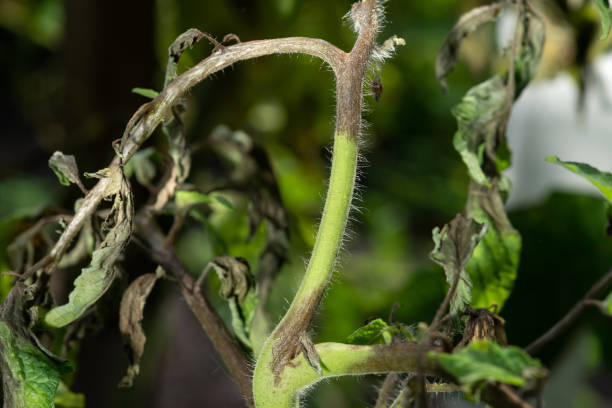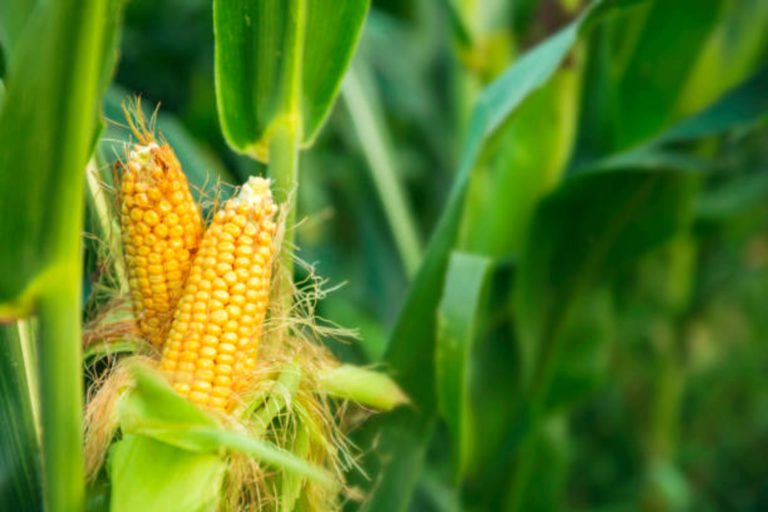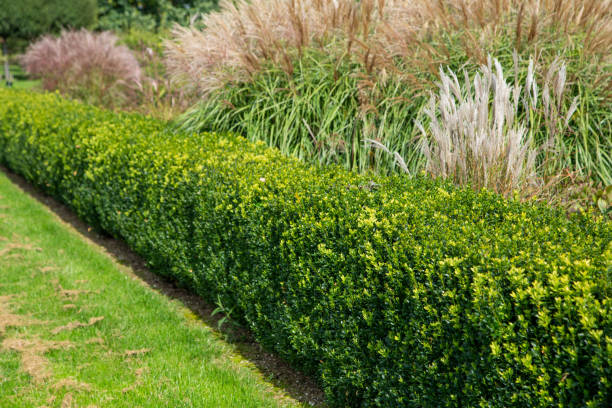How to care for a Flamingo willow tree? 6 Best steps
The Flamingo Willow, an enchanting botanical marvel that dances along the water’s edge, captivates with its strikingly vivid hues and graceful silhouette. As a member of the Salicaceae family, it shares its lineage with other willows, but its fiery pink branches and delicate foliage set it apart as a true botanical standout.
This remarkable tree thrives in wetlands and marshy landscapes, bringing a touch of elegance to nature’s waterlogged canvas. Join us on a journey to explore the vibrant world of the Flamingo Willow, where family ties, growth secrets, and its preferred locales unveil a story as captivating as its appearance.
How to care for a Flamingo willow tree?
To care for a Flamingo Willow tree, ensure it has well-draining soil, maintain consistent moisture levels, especially during the growing season, and prune it in late winter to shape and promote new growth.
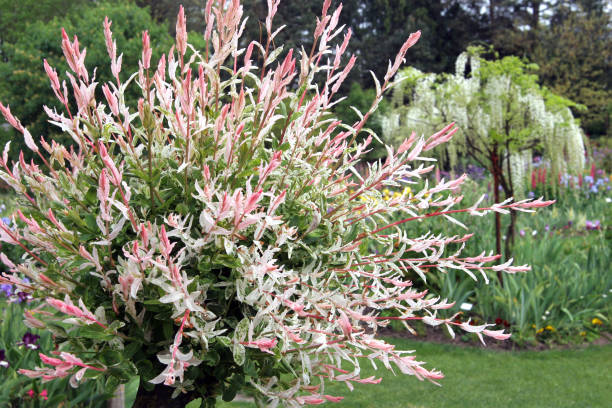
6 Steps to Care for Flamingo Willow Tree
Soil and Location:
Plant your Flamingo Willow in well-draining soil with good organic content. Choose a location that receives full to partial sunlight for optimal growth.
Watering:
Flamingo Willows thrive in moist conditions. Regularly water the tree, especially during hot and dry spells, to keep the soil damp but not waterlogged.
Mulching:
Apply a layer of mulch around the base of the tree to help retain soil moisture and regulate temperature. Mulch also prevents weed growth.
Pruning:
Prune your Flamingo Willow in late winter or early spring to remove dead or damaged branches and to shape the tree. This encourages new growth and maintains its elegant appearance.
Fertilisation:
Apply a balanced, slow-release fertilizer in early spring to provide essential nutrients for healthy growth.
Humidity and temperature:
Flamingo Willow trees prefer a humid environment and are well-suited to regions with moderate to high humidity levels. They thrive in areas where the relative humidity remains above 50%.
In terms of temperature, they are typically hardy in USDA hardiness zones 5 to 9, which means they can tolerate a range of temperatures. However, they prefer mild to warm climates.
Types of flamingo willow:
Certainly, there are different types of willow trees, including Flamingo Willow, and other notable willow species:
Flamingo Willow (Salix integra):
As previously mentioned, it’s known for its colourful variegated foliage, often featuring shades of pink, white, and green.
Pussy Willow (Salix discolor):
This willow is recognized for its fuzzy catkin flowers that appear in early spring, usually grey or silver.
Goat Willow (Salix caprea):
Also known as the “Great Sallow,” it’s a medium-sized willow tree with furry catkins and broad, green leaves.
Weeping Willow (Salix babylonica):
One of the most famous willow species, it’s known for its gracefully cascading branches and slender leaves. It’s often planted near water bodies for its dramatic appearance.
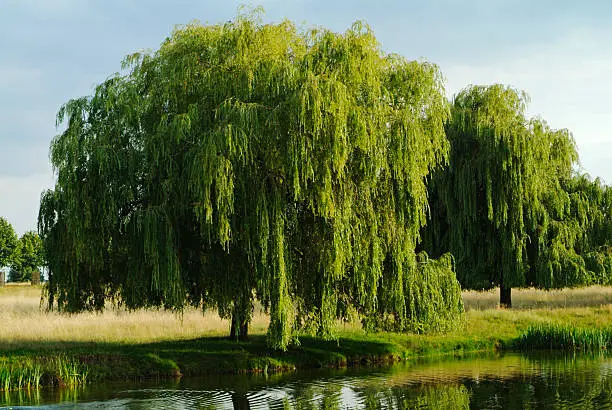
White Willow (Salix alba):
This tree has silvery-grey leaves and is known for its bark, which contains salicin, a compound used to make aspirin. It’s also used for its strong and flexible wood.

The Coral Bark Willow (Salix alba ‘Britzensis’)
It is a striking cultivar of the white willow. What sets it apart is its vibrant coral-red or orange-red stems, which are especially prominent during the winter months when the leaves have fallen. It’s a deciduous tree that can reach a height of 20-30 feet (6-9 meters) and is valued for its ornamental appeal in gardens and landscapes.
Each of these willow species has its unique characteristics and uses, making them valuable additions to landscapes or natural environments.
Pruning:
Pruning is a horticultural practice that involves selectively trimming or cutting branches, stems, or foliage from plants for various purposes, such as shaping, maintaining health, and promoting growth. Here are some key points to consider when pruning plants:
Timing:
The timing of pruning depends on the type of plant and its specific needs. Generally, pruning during the dormant season (late winter or early spring) is common for many deciduous trees and shrubs. However, some plants may benefit from light pruning throughout the year to remove dead or diseased branches.
Techniques:
Different plants require different pruning techniques. For instance, when pruning branches, make clean cuts just above a bud or lateral branch to encourage proper healing. Avoid leaving stubs or making jagged cuts.
Consideration:
Be mindful of the plant’s growth habits and needs. Some plants, like the Flamingo Willow, benefit from annual pruning to maintain their desired shape and vibrant appearance.
Fertilisation:
Fertilizing Flamingo Willow trees properly is essential for their health and vibrant growth. Here are some guidelines for fertilizing these trees:
Timing:
Apply fertilizer in the early spring, just before new growth begins. This allows the tree to access the nutrients it needs as it starts its active growing season.
Type of Fertilizer:
Choose a balanced, slow-release granular fertilizer with a ratio of 10-10-10 or 14-14-14. These numbers represent the percentages of nitrogen (N), phosphorus (P), and potassium (K) in the fertilizer. A balanced fertilizer ensures overall plant health.
Common problems of flamingo willow:
Flamingo Willows (Salix integra) are relatively hardy trees, but they can still encounter some common problems. Here are a few issues you might encounter:
Pest Infestations:
Flamingo Willows can be susceptible to aphids, caterpillars, and other insects that can damage the leaves and stems. Regularly inspect your tree for signs of infestations, like discoloured or distorted leaves, and treat as needed with insecticidal soap or other appropriate remedies.
Diseases:
While generally disease-resistant, they can occasionally suffer from fungal diseases like rust, powdery mildew, or cankers. Proper spacing, good air circulation, and avoiding overhead watering can help prevent these issues. If disease does occur, consider pruning affected branches and applying fungicides.
Winter Damage:
In cold climates, Flamingo Willows can experience dieback or damage during severe winter weather. Protecting the tree with mulch around the base and covering it during extreme cold spells can help mitigate this risk.
Frequently asked questions:
What is a Flamingo Willow?
A Flamingo Willow, scientifically known as Salix integra, is a deciduous tree known for its striking variegated foliage, featuring shades of pink, white, and green.
How tall do Flamingo Willow trees grow?
Flamingo Willow trees typically reach heights of 10 to 20 feet (3 to 6 meters) with a similar spread. However, their size can vary depending on growing conditions and pruning.
Where should I plant a Flamingo Willow tree?
Flamingo Willows thrive in locations with well-draining soil and full to partial sunlight. They are often planted near water bodies, such as ponds or streams, but can also grow well in regular garden soil.
When should I prune my Flamingo Willow?
Prune Flamingo Willows in late winter or early spring before new growth begins. This helps maintain their shape and encourages vibrant stem colours.
How do I care for a Flamingo Willow during winter?
In colder climates, protect the tree from severe frost by mulching the base and covering it with burlap or a frost blanket.
Can Flamingo Willows tolerate wet soil?
Yes, they can thrive in moist to wet soil conditions. They are often found in wetland areas and can tolerate periodic flooding.
Are Flamingo Willows resistant to pests and diseases?
While generally hardy, they can be susceptible to pests like aphids and diseases like rust or powdery mildew. Regular monitoring and proper care can help prevent and manage these issues.
Do Flamingo Willows require regular fertilization?
They benefit from annual fertilization in the spring using a balanced, slow-release fertilizer. However, avoid excessive fertilization, as it can lead to excessive growth.
Can I grow Flamingo Willows in containers?
It’s possible to grow them in large containers, but they may not reach their full-size potential. Ensure the container has good drainage and provide regular care.
Are Flamingo Willows invasive?
Flamingo Willows are not considered invasive in most regions, but they can spread by seed in favourable conditions. Check with local authorities for any specific regulations in your area.
Conclusion
In conclusion, the Flamingo Willow stands as a botanical gem that graces our landscapes with its vibrant presence. With its captivating variegated foliage, ranging from shades of pink to white and green, this tree brings year-round beauty to gardens and water’s edge habitats.
While its care demands attention to detail, the reward is a picturesque tree that enchants its striking appearance. Whether for ornamental purposes or ecological benefits, the Flamingo Willow, a member of the willow family, has firmly earned its place.


